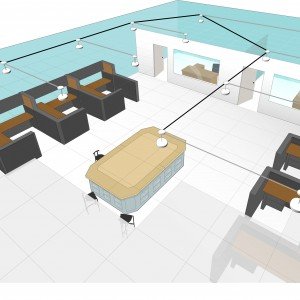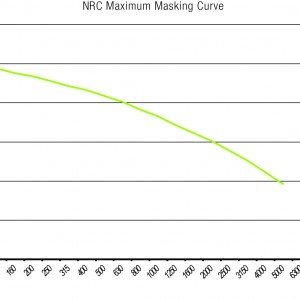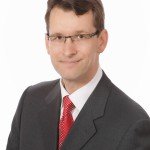Understanding the role of sound masking
While too much noise can be disruptive and even dangerous in work environments; silence is not always golden. Niklas Moeller, vice-president of K.R. Moeller Associates Ltd, looks at how to find the perfect level of noise.
Today, noise is widely considered both an environmental pollutant and a health hazard.
Noises of 80 dBA or higher are considered potentially harmful. Lawnmowers, rock concerts and various household appliances are examples of items that can produce these volumes. Warning signs of hazardous levels include not being able to hear a person talking 3 feet (1 metre) away from you, finding speech or sounds dull or muffled after leaving the noisy area, and pain or ringing in your ears following exposure to the area.
Continued exposure to such high levels can permanently damage your hearing. Hence, many countries have developed workplace standards to ensure that the average level to which an employee is exposed during an eight-hour workday does not exceed 80 dBA.
However, the negative effects of noise depend on more than just volume. For example, research indicates that intermittent noises – even those of low volume and short duration – can also affect health. Our senses are designed to detect such changes in our environment, making it difficult to ignore them. Exposure to sporadic noises can elevate heart rate and blood pressure. It can also hamper job performance and leave you feeling tired and stressed.
If you work in a poorly designed open-plan office, you can likely relate to these side-effects, but you might be surprised to learn that the cause of your discomfort is – in a manner of speaking – not too much sound, but too little. Due to improvements in construction materials, as well as quieter office and mechanical equipment, the ambient level in the majority of offices is too low, leaving employees trying to work in library-like conditions in which they can easily overhear conversations and noises are very disruptive.
We have all heard the old saying ‘silence is golden.’ However, just as with lighting and temperature, there is a comfort zone for the volume of sound and it is actually not zero. Though adding more sound to the facility appears to contradict the goal of controlling noise, it is often a necessary step – one that is accomplished by installing a sound masking system.
Sound masking technology uses loudspeakers to distribute an engineered background sound throughout a facility, raising its ambient level in a controlled fashion (Figure 1). The premise behind this solution is simple: the new level covers up noises that are lower in volume and reduces the disruptive impact of those that are higher by minimising the degree of change perceived by the listener. The frequency and severity of disruptions to occupants’ concentration is diminished. Similarly, conversations are either entirely masked or their intelligibility is reduced, improving privacy.

Figure 1 Credit: KR Moeller Associates Ltd.
A sound masking system consists of a series of loudspeakers installed in the ceiling, which distributes an engineered background sound throughout a facility. Most people compare the sound of a well-tuned system to that of softly blowing air.
Examples of this type of effect are endless: the sound of running water, an airplane engine, rustling leaves, the murmur of a crowd in a busy restaurant. All have the potential to mask sounds a listener might otherwise hear. Of course, when introducing a masking sound to a workplace, it is vital to ensure that it is as comfortable and unobtrusive as possible. Otherwise, the sound runs the risk of becoming a source of irritation as was the case with ‘white noise’ systems in the 1970s.
Indeed, this solution is frequently—but mistakenly—referred to as ‘white noise.’ While both types of sound use randomly generated frequencies, sound masking’s range is narrower (typically 100 to 5000 hertz (Hz), or as high as 10,000). Furthermore, the volume of these frequencies is not equal; rather, they follow a non-linear curve specifically developed for both effectiveness and comfort. Subjectively speaking, whereas white noise has a hissing quality, occupants tend to compare sound masking to softly blowing air.
The generally recommended sound masking volume is between 43 and 48 dBA in open plans and from 40 to 45 dBA in private offices. To put it into perspective, conversation generally falls into the range of 50 to 60 dBA, while a quiet room is typically 40 dBA and a quiet library is 30 dBA. Also, the decibel scale is logarithmic, so although the numerical difference between two levels might appear small, the actual difference is exponential. For example, the energy of an 80 dBA sound is 1585 times greater than a sound of 48 dBA. Expressed in terms of distance, if 80 dBA is equivalent to 1 mile (1.6 km), 48 dBA is only 3.3 feet (1 m).
However, there is more to implementing sound masking than providing a subjectively pleasant sound. One must also ensure that the sound is actually performing its intended job. If not, conversations may still be overheard and occupants’ concentration may be disturbed.
The effectiveness of the masking sound is directly related to the sound masking system’s ability to closely match the specified curve—also called a ‘spectrum’—throughout the space in which it is installed. This curve should be provided by an acoustician or independent party such as the National Research Council (NRC), rather than by a masking vendor. For example, Figure 2 shows the NRC’s Masking Curve at 48 A-weighted decibels (dBA).

Figure Two. Credit: National Research Council (NRC).
A sound masking spectrum or curve is typically specified by an acoustician or supplied by an independent third party, such as the National Research Council (as shown), rather than by the sound masking system’s vendor.
The sound masking system must be tuned by a qualified technician after the ceilings and all furnishings are in place, and with mechanical systems operating at normal daytime levels. Since conversations and activities can prevent accurate measurement, this task is usually handled prior to occupation or after hours. The technician uses a sound level meter to measure the masking sound at ear height. They analyse the results and adjust the system’s volume and equalizer controls accordingly. They repeat this process as often as needed until they meet the curve at each tuning location. Some networked sound masking systems automate this process; a computer measures the sound and then rapidly adjusts the masking output.
Achieving consistency in the masking sound is also important for comfort. A uniform sound fades into the background more easily and occupants quickly come to consider it a natural part of their space.

Niklas Moeller is the vice-president of K.R. Moeller Associates Ltd., manufacturer of the LogiSon Acoustic Network sound masking system (www.logison.co.uk ). He also writes an acoustics blog at soundmaskingblog.com.
Understanding the role of sound masking
While too much noise can be disruptive and even dangerous in work environments; silence is not always golden. Niklas Moeller,
Safety & Health Practitioner
SHP - Health and Safety News, Legislation, PPE, CPD and Resources Related Topics
Listen up – Headphones and the Noise at Work regulations
UK Hearing Conservation Association conference – Noise at work must remain on the HS agenda
UK Hearing Conservation Association Conference – Stigma stopping some musicians from using hearing protection



